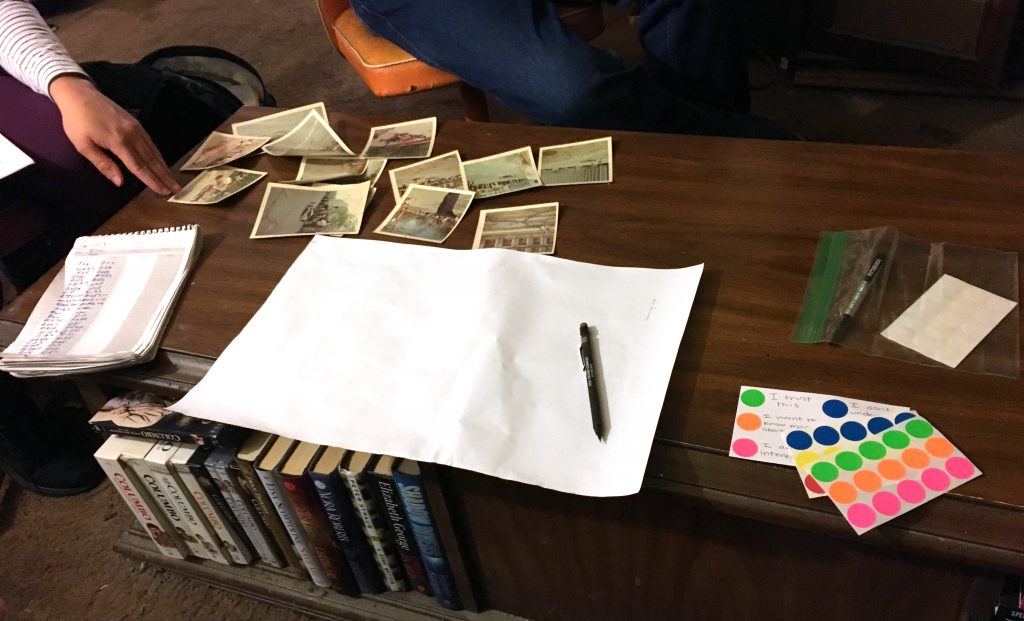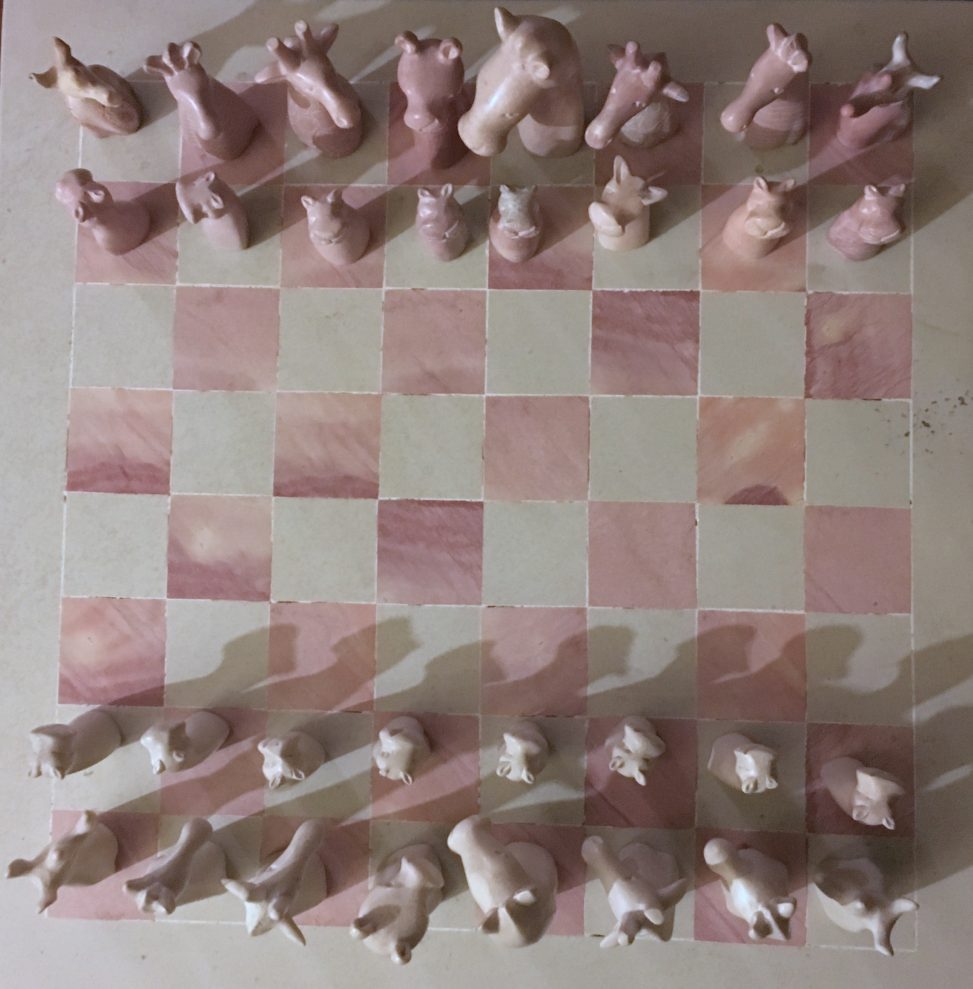Team: Alyssa Casamento, Nathan Serafin, Josh LeFevre
Project Introduction
An initial meeting with Steve was held at his home, to learn about his daily life and develop an idea for an electronic device that would help him complete daily tasks more effectively. The solution can take any form but will be specifically tailored for his needs.
Discussion Agenda
Prior to our meeting with Steve, we spent a lot of time crafting particular questions and activities that would enhance our ability to better understand his needs and expectations for the project. Our goal was to observe the context of his living environment, and uncover factors of his daily routine that may benefit from an assistive device. Below is our agenda with Steve:
Introduction of project (20 min)
- Thank yous
- About us
- Our names
- Where we are from
- What we are studying
- Would you mind if we take pictures to document our process and keep the ideas we generate here fresh
Project outline (2-3 min)
- Objective: “Create an electrical device that will make a frequent task more convenient”
- We look forward to working with you over the several weeks
- *(bring project 2) discuss and show the devices we have already made for ourselves here
- Tonight we want to get to know about you, your life and the things that could be improved. We want to start with a few questions, then conduct a two activities, and then wrap up
Get to know Steve (7 min)
- Could you give us a brief overview of your life journey up until this point?
- What are your top hobbies?
- What are your interests(major/hobbies)?
- How does your family and/or close friends play a role in your life?
- How did you come to participate in this activity?
- We heard you had an idea for what we could do to help you. We were curious if you would mind telling us after we work through a few activities to help us better understand your environment
Ethnographic Questions (8-10 min)
- Could you tell us about your typical day hour-by-hour?
- Could you tell us about a specific experience where you got frustrated at something you interact with everyday and how you solved the problem?
- How do you go about solving problems?
Design Activities (30-40 min)
Touchstone tour + home visit (15-20 min)
- We’d like you to take us on a tour. We’ve provided these stickers that correlate to the questions and statements on this sheet. The questions are:
- I feel frustrated about ________
- I am interested in understanding ______ better because ______
- I want to know more
- I don’t understand _______
- I worry about _______
- I trust this
- I wish _____ was here
- This is not great
- I avoid this
- This works well
- This works poorly
- Something needs improvement
- Please take 5-10 min to place these stickers on items around the house that you feel match these statements. Afterward, we’ll talk about them. Don’t feel like you need to use all of them or even one of every question. Only use the stickers you feel are appropriate
Flexible Modeling (15 min)
- Each of us will draw or create an idea that may be helpful using the paper and craft tools in front of us. Please feel free to annotate specific functionalities or needs
- Afterward, let’s have brief discussion
We would like to hear your idea and combine it with the observations we just heard
Wrap-up & Reflection (5-10 min)
- Thank you for your time and support. We can’t promise that exactly what we modeled here is what the end result will look like. We believe the best solutions come through iteration and testing. Sometimes this requires a pivot.
- To be successful we’d like to stay in contact as we iterate on ideas and have you test them and give us feedback because we want to make sure that we work together to create something actually useful
- Would you be willing to to give us feedback via email, over the phone or in person over the next several weeks?
- What feedback or additional information do you feel we missed or you would like to share with us?
Summary

Photographs from Buggy, and Chess Score Sheet.
Steve earned his Metallurgy degree from CMU. He was an avid buggy builder and racer in his days at CMU, and he shared some of his old buggy racing photos with us. Steve is in his upper 60s and is currently working once a week for a furnace company which focuses on building large scale furnaces for industrial metal working. Work has kept him busy through life. After retirement, Steve remains active through playing and teaching chess, and traveling for work. Steve was a cross country runner at CMU, and still wants to remain physically active. He likes to walk many places and spend time on the treadmill at the JCC.
We learned that Steve wants to keep an alert mind and does this by reading, playing chess, teaching at the JCC, and interacting with others. If he isn’t doing any of those activities, he can be found working or watching old TV shows. He especially likes Hawaii Five-0 and CSI style shows.
We also observed that his current solution ideas focus on learning and decreasing small frustrations or inconveniences in his life. One his greatest inconveniences is his disorganization, causing him to lose things.
Through our discussion, we uncovered three potential ideas to help Steve:
- A device to alert him if he is nodding off in the car.
- He finds that driving long distances to see his siblings or for work can be tough because he becomes sleepy. His idea here was to have a device that is either worn or free in the car that alerts him if he is falling asleep at the wheel. The alert should be clear but not startling. He’d prefer not needing to remember to put anything on.
- A device to help him locate his iPhone.
- We could suggest using the find my iPhone app, but it seems that one of his main struggles with finding his iPhone is being able to hear it ring when called from another phone. We could explore ways to indicate where the phone is within the home that don’t require sound for location.
- He also doesn’t want to carry anything extra bulky around on his phone. Minimalistic size is best.
- An electronic chess score keeper
- He’s tried electronic score keepers before but they seem to cumbersome, and writing the scores down is just faster.
- Perhaps we could use our score keeper to show him his trends and scores over time.
Overall the conversation was very amiable, although he was hesitant to participate in the design actives we prepared. Also, it felt like the invitation to participate in the project stretched him a little bit.

Chess Set Given at Retirement.
The idea of exploring potential areas of assistance not only opened up Steve to providing more context to his day, but also highlighted the process of various activities and actions he takes. By the end of our discussion he had opened up and we began talking about about staying in contact to test our prototypes with him, at his convenience.
Reflection & Synthesis
Overall, the meeting was very positive and Steve was excited to meet with us and work with us in the coming weeks. We are still in the process of synthesizing our interview into a specific direction. This is fine, but due to the difficulty of uncovering more specifics around the daily processes Steve makes, we will need to continue to develop the conversation with him to make sure our ideating truly meets his needs.
We strayed from our meeting plan to suite the comfort of Steve. During the interview, Steve was initially hesitant to participating in the planned activities. However, casual conversation with intended design questions in mind enhanced our ability to understand more about Steve and the things he struggles with daily. We feel that framing our intentions to Steve before the actual meeting would have given us better participation. Also, having more potential ideas on hand to meet his needs could have been more effective than just the three we brought. It was effective to provide natural conversation and a strong framework to encourage people to participate in an activity outside of their comfort zone in order to uncover more.
Meeting Steve in his home was valuable to understand his environment and the things that he values. In future meetings we may meet him at other locations around Pittsburgh that are familiar to Steve to observe other potential environments where we could make an positive impact.
So far, each of us had a slightly different insights and take aways from our meeting. We do not know what we are going to prototype yet, as we need to research the implementation options for the initial ideas. Over the next week we are looking forward to discussing, affinity mapping, and analyzing our next steps.

Leave a Reply
You must be logged in to post a comment.